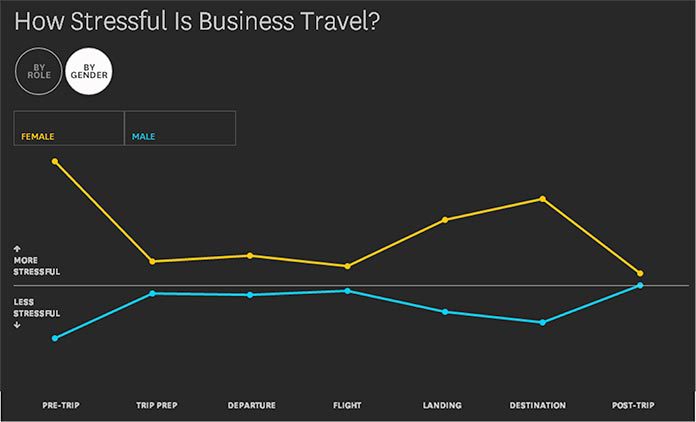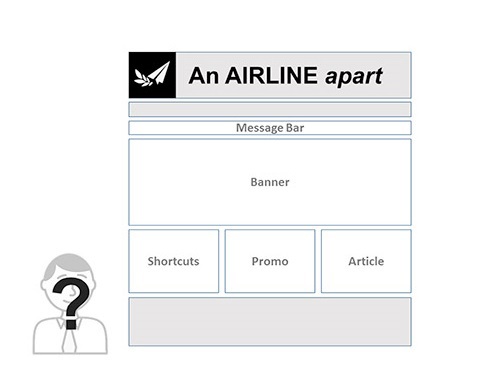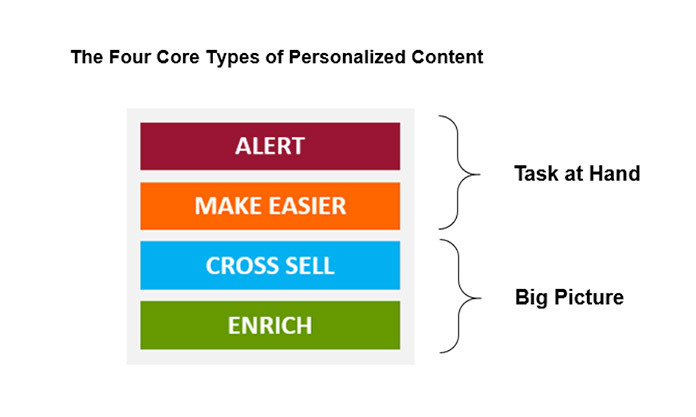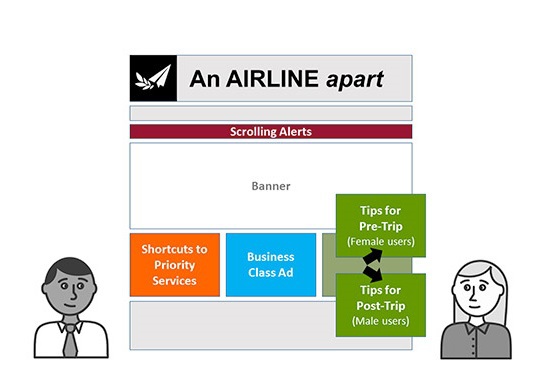Content Personalization Techniques
I bring to your attention the translation of the article "Approximate Content for Personalized Websites" .
In theory, this sounds really cool: user-specific content can provide a positive response. But there is a dark side: being misused, targeting risks invasion of confidentiality and undermining trust.
How to use this technique without harm to the content? How to personalize content while maintaining respect for the user?
')
Is it good or bad
At a basic level, personalization (or targeting) means providing the user with unique content based on something we know about him or her — from geographical location to the history of visits. And, as you have probably observed, the effectiveness of personalization will depend on how you present it. For example, this is useful when Amazon makes recommendations based on our browsing history. Conversely, we are all tired of annoying targeted advertising, which either knows too much about you from somewhere, or is trying to sell something that you don’t need at all.
Do you need this
You need to understand whether targeting will be useful in your particular case.
Good reasons for personalizing content:
Bad reasons for personalizing content:
Getting started
Now consider the technology targeting. There are two basic principles of personalization:
If you are just starting to work with personalization, then you should try the principle based on the rules, which will be discussed later in the article. First of all, you will need to identify segments of your audience with some distinctive feature set, such as age, gender, or location. The target segment will be determined in real time based on external or internal data.
So far, everything sounds rather abstract, so let's imagine that we are creating a new website for the airline. Our target audience is creative professionals who regularly make business trips. What online content should we create in order to gain an advantage?
Our first idea is to help people cope with stress during the trip. It sounds simple enough, but what is “stress”?
Definition of audience segments
A survey was conducted: 7400 business people who regularly travel to work asked how much stress they experience at each stage of the journey. The following results were obtained (sorted by gender):

Source: Harvard Business Review. HEC, Carlson Wagonlit.
As you can see, women feel quite strong stress before traveling, while for men it is the least stressful stage. After the trip, everything is strictly the opposite - this is the most stressful stage for men and the most peaceful for women.
Now we have sorted the data by posts, and obtained the following results:

Source: Harvard Business Review. HEC, Carlson Wagonlit.
According to the data obtained, a change in the level of stress during a business trip depends strongly on the role in the company. For example, employees with a high job experience less stress before the trip and more - after, and for support staff it is strictly the opposite.
Now we have enough data to highlight segments of the targeted audience. We could create 12 segments, focusing both on the floor and on the role in the team, but now we will focus our attention only on top managers of different sexes.
Apply segmentation to content.
From a technical point of view, content personalization comes down to managing the rules for different page elements. Suppose we have our airline's homepage. If we do not know anything about the user, he will see the “default” page.

Art: Kristina Bourlotos
In theory, we could now set the rules for all these blocks. But how to understand where to start? This is the main issue of content strategy, and we should be very careful about this.
In order to implement the project, a framework was developed for the four main types of personalized content. The first two deal with “top priorities”, which the client came to your site to solve. The last two deal with the “big picture” or what you are trying to make people see and feel. Here's what it looks like:

Source: ICF Interactive
Remember our default homepage? After applying our rules, the top manager will see the following (the color corresponds to the type of frame):

Art: Kristina Bourlotos
Now at the bottom of the page is targeted content for top managers and executives. Please note that “add-on content” is different for both male and female audiences — the results of a study on stress while traveling are taken into account.
If we continue to follow our strategy, now we have to set the rules for each of the 12 audience segments. Technologies are designed to help you speed up this process to some extent; a disciplined approach to personalizing content is critical. Otherwise, you will be overwhelmed not only in terms of creation and execution, but also in terms of service and support.
All this does not scare you? Fine! Here are some more things to keep in mind.
Choose the right resources
Remember that the use of personalized content requires not only an effective strategy, but also ongoing support. You may still need improvements if:
Be polite
You can talk endlessly about targeting ethics, but it is enough to say that there is a line between providing useful personalization and invasion of privacy. Make sure that the content offered is really at the intersection of the interests of users and your business goal, and not just designed to meet your desires. Combining a targeted strategy with the respect of users will ensure that your site proves to be a good example of personalization.
In theory, this sounds really cool: user-specific content can provide a positive response. But there is a dark side: being misused, targeting risks invasion of confidentiality and undermining trust.
How to use this technique without harm to the content? How to personalize content while maintaining respect for the user?
')
Basics of personalization
Is it good or bad
At a basic level, personalization (or targeting) means providing the user with unique content based on something we know about him or her — from geographical location to the history of visits. And, as you have probably observed, the effectiveness of personalization will depend on how you present it. For example, this is useful when Amazon makes recommendations based on our browsing history. Conversely, we are all tired of annoying targeted advertising, which either knows too much about you from somewhere, or is trying to sell something that you don’t need at all.
Do you need this
You need to understand whether targeting will be useful in your particular case.
Good reasons for personalizing content:
- Your audience can be segmented by signs that are meaningful.
- Targeted information provides added value to users.
- Personalization of content is tied to a specific business goal.
Bad reasons for personalizing content:
- Because we can.
- Some variations №1.
Getting started
Now consider the technology targeting. There are two basic principles of personalization:
- Based on the rules. This approach requires more manual work, namely the creation of a database of individual segments of the audience and prescribing rules for what to show. Example: it looks like Andrei’s IP address is Novosibirsk, so let's show him what we show everyone in this region.
- Based on the algorithm. This approach involves focusing not on the general segment, but on a specific user. Example: Andrei, on average, views 3.65 articles about games per day, so let's show him something about games.
If you are just starting to work with personalization, then you should try the principle based on the rules, which will be discussed later in the article. First of all, you will need to identify segments of your audience with some distinctive feature set, such as age, gender, or location. The target segment will be determined in real time based on external or internal data.
Framework application
So far, everything sounds rather abstract, so let's imagine that we are creating a new website for the airline. Our target audience is creative professionals who regularly make business trips. What online content should we create in order to gain an advantage?
Our first idea is to help people cope with stress during the trip. It sounds simple enough, but what is “stress”?
Definition of audience segments
A survey was conducted: 7400 business people who regularly travel to work asked how much stress they experience at each stage of the journey. The following results were obtained (sorted by gender):

Source: Harvard Business Review. HEC, Carlson Wagonlit.
As you can see, women feel quite strong stress before traveling, while for men it is the least stressful stage. After the trip, everything is strictly the opposite - this is the most stressful stage for men and the most peaceful for women.
Now we have sorted the data by posts, and obtained the following results:

Source: Harvard Business Review. HEC, Carlson Wagonlit.
According to the data obtained, a change in the level of stress during a business trip depends strongly on the role in the company. For example, employees with a high job experience less stress before the trip and more - after, and for support staff it is strictly the opposite.
Now we have enough data to highlight segments of the targeted audience. We could create 12 segments, focusing both on the floor and on the role in the team, but now we will focus our attention only on top managers of different sexes.
Apply segmentation to content.
From a technical point of view, content personalization comes down to managing the rules for different page elements. Suppose we have our airline's homepage. If we do not know anything about the user, he will see the “default” page.

Art: Kristina Bourlotos
In theory, we could now set the rules for all these blocks. But how to understand where to start? This is the main issue of content strategy, and we should be very careful about this.
In order to implement the project, a framework was developed for the four main types of personalized content. The first two deal with “top priorities”, which the client came to your site to solve. The last two deal with the “big picture” or what you are trying to make people see and feel. Here's what it looks like:

Source: ICF Interactive
- Content that warns. These notifications improve customer service by promptly displaying up-to-date information, such as flight delays, service interruptions, or any other real-time events.
- Content that makes tasks easier. Referring to the “priorities” category, this content is designed to make life easier for users, helping them to do what they came here for - smart navigation, direct links to useful tools, filtering extra information.
- Content that sells. One of the most important elements. Regardless of whether you are a small company or a large oil company, this is your way to enter and stay on the market. The trick here is to show users what they need, not just what you want them to see. Examples: advertising a new product, announcing an upcoming conference, information about a charity event, etc.
- Content that complements. The “close relative” of the content vendor complements the overall brand perception and improves the user experience. May include links to blogs, articles, social networks and independent sources or third-party vendors. Think of it as unobtrusive advertising as opposed to imposing.
Remember our default homepage? After applying our rules, the top manager will see the following (the color corresponds to the type of frame):

Art: Kristina Bourlotos
Now at the bottom of the page is targeted content for top managers and executives. Please note that “add-on content” is different for both male and female audiences — the results of a study on stress while traveling are taken into account.
If we continue to follow our strategy, now we have to set the rules for each of the 12 audience segments. Technologies are designed to help you speed up this process to some extent; a disciplined approach to personalizing content is critical. Otherwise, you will be overwhelmed not only in terms of creation and execution, but also in terms of service and support.
First step
All this does not scare you? Fine! Here are some more things to keep in mind.
Choose the right resources
Remember that the use of personalized content requires not only an effective strategy, but also ongoing support. You may still need improvements if:
- you do not have enough information to make targeting really useful;
- you do not have enough staff to maintain targeted content;
- your content is not semantically rich - you need metadata, taxonomy, etc .;
- You do not have the ability to track and analyze statistics.
Be polite
You can talk endlessly about targeting ethics, but it is enough to say that there is a line between providing useful personalization and invasion of privacy. Make sure that the content offered is really at the intersection of the interests of users and your business goal, and not just designed to meet your desires. Combining a targeted strategy with the respect of users will ensure that your site proves to be a good example of personalization.
Source: https://habr.com/ru/post/291276/
All Articles